This Week At Angama #129
23 July 2020 | This Week at Angama | Adam Bannister
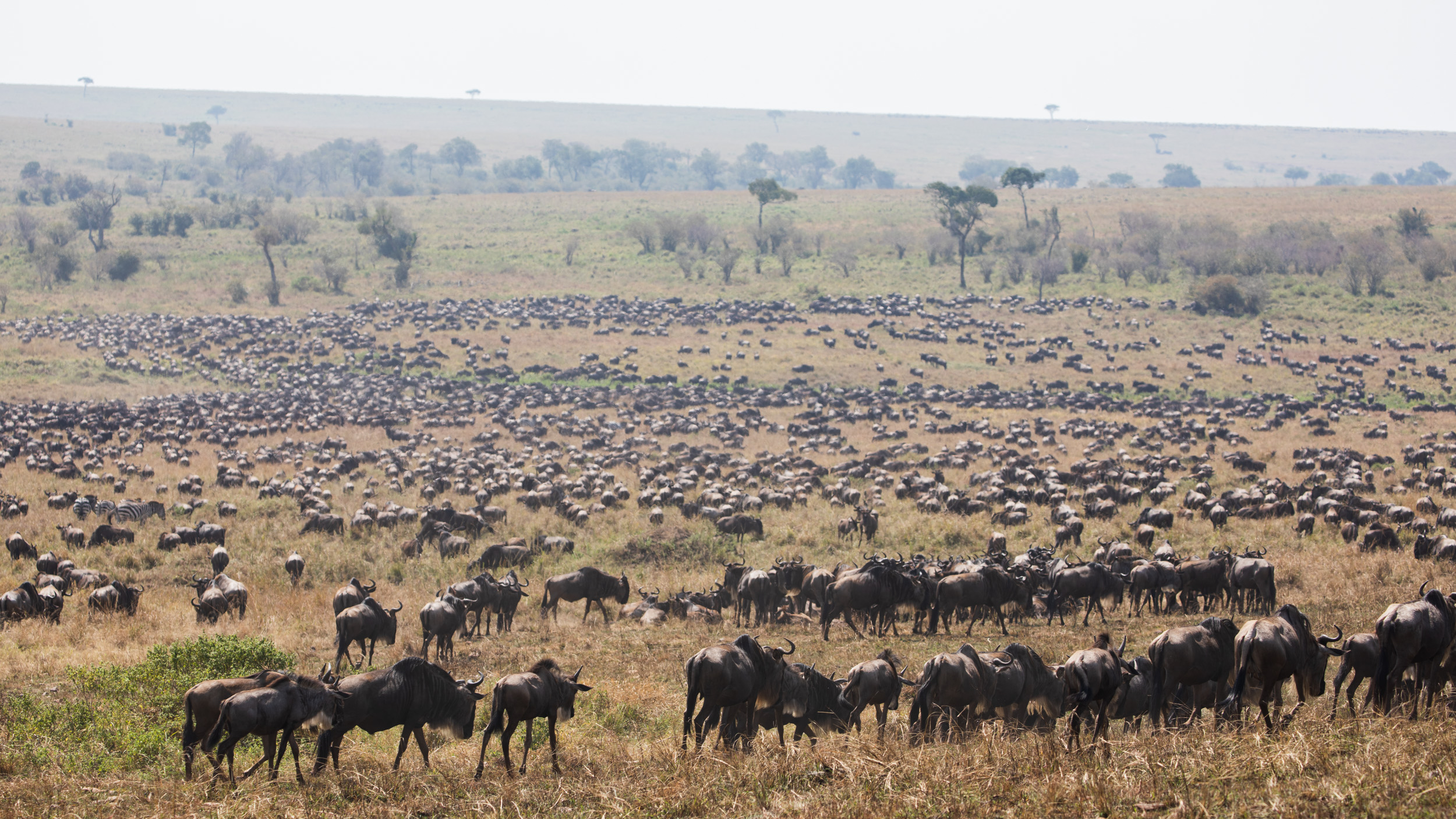
Words simply cannot do justice when it comes to explaining the emotions attached to the arrival of the giant migratory herds into the Maasai Mara. This epic journey takes hundreds of thousands of wildebeest across the Serengeti ecosystem, culminating in extraordinary river crossings. This natural phenomenon is considered by many to be the pinnacle of wildlife viewing. I am delighted to say that they have arrived and from initial sightings, this promises to be one of the bigger migrations that has been seen in the Mara in the last decade. [f 7.1, 1/250, ISO 100, -0.33]

One morning you head out on a drive and look south to view the horizon speckled with black dots as far as the eye can see. The grunts of the hundreds of thousands of gnus mixes into a constant drone. Excitement builds at the prospect that within a day or two, they will be everywhere. [f 5.6, 1/800, ISO 160, -0.67]

The next day we head back to the same point and the wildebeest have arrived – and for me, the first wave is the most exciting. The exact date of the first arrivals into Kenya is always a complete mystery, and swings back and forth from year to year. [f 5.6, 1/2000, ISO 160, -0.67]
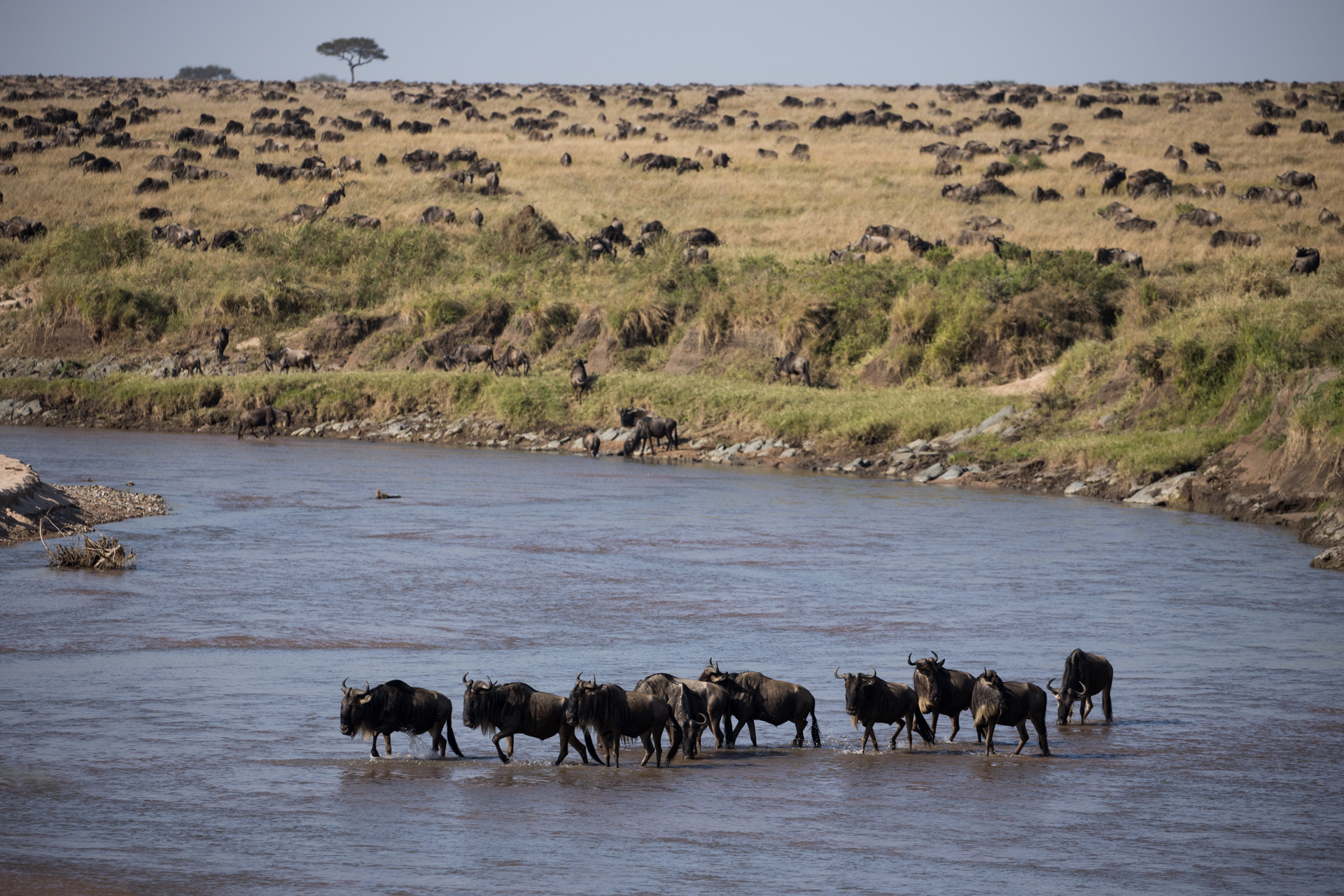
Their point of arrival has been the Sand River. Huge rainfall this year has resulted in a good level of water in this normally dry riverbed. [f 5.6, 1/1250, ISO 200, -0.67]
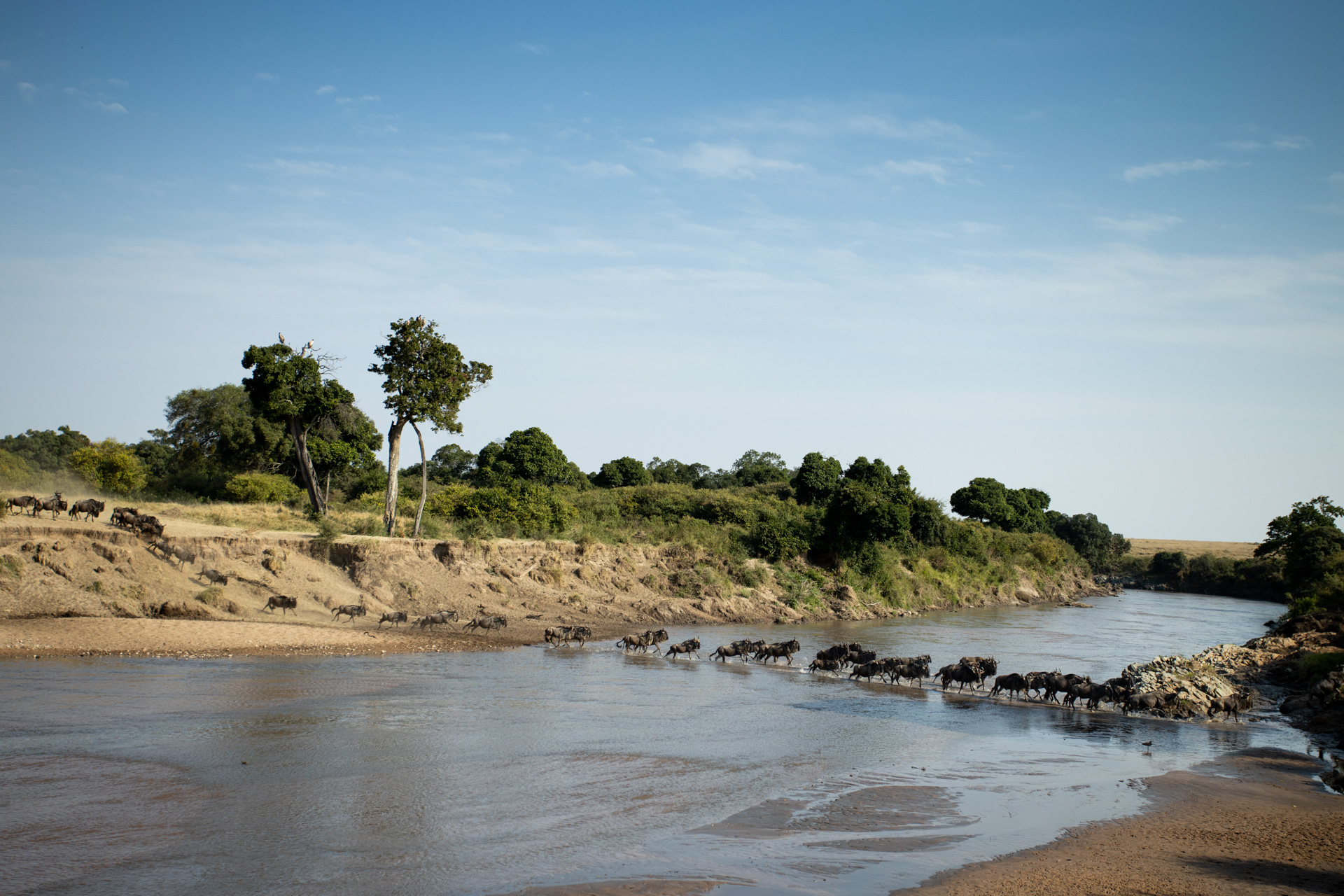
At first they come across in small groups, with the distant herds watching sceptically from a distance. [f 5.6, 1/400, ISO 250, +0.33]
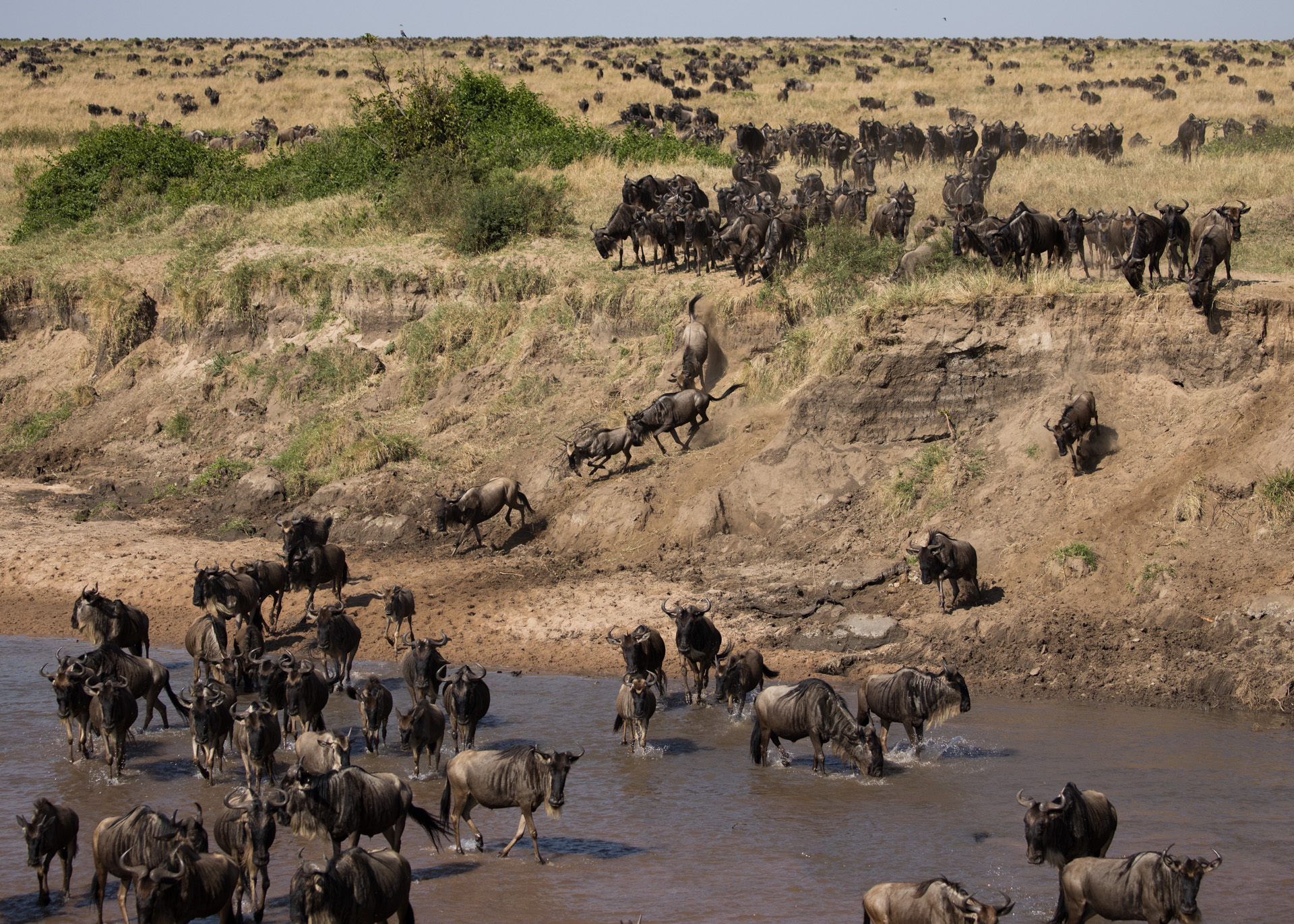
And all of a sudden something clicks into place and they all start to follow. This is the very definition of herd mentality. You see your neighbour running north towards the river and so you start to run. [f 5.6, 1/1000, ISO 200, -0.33]
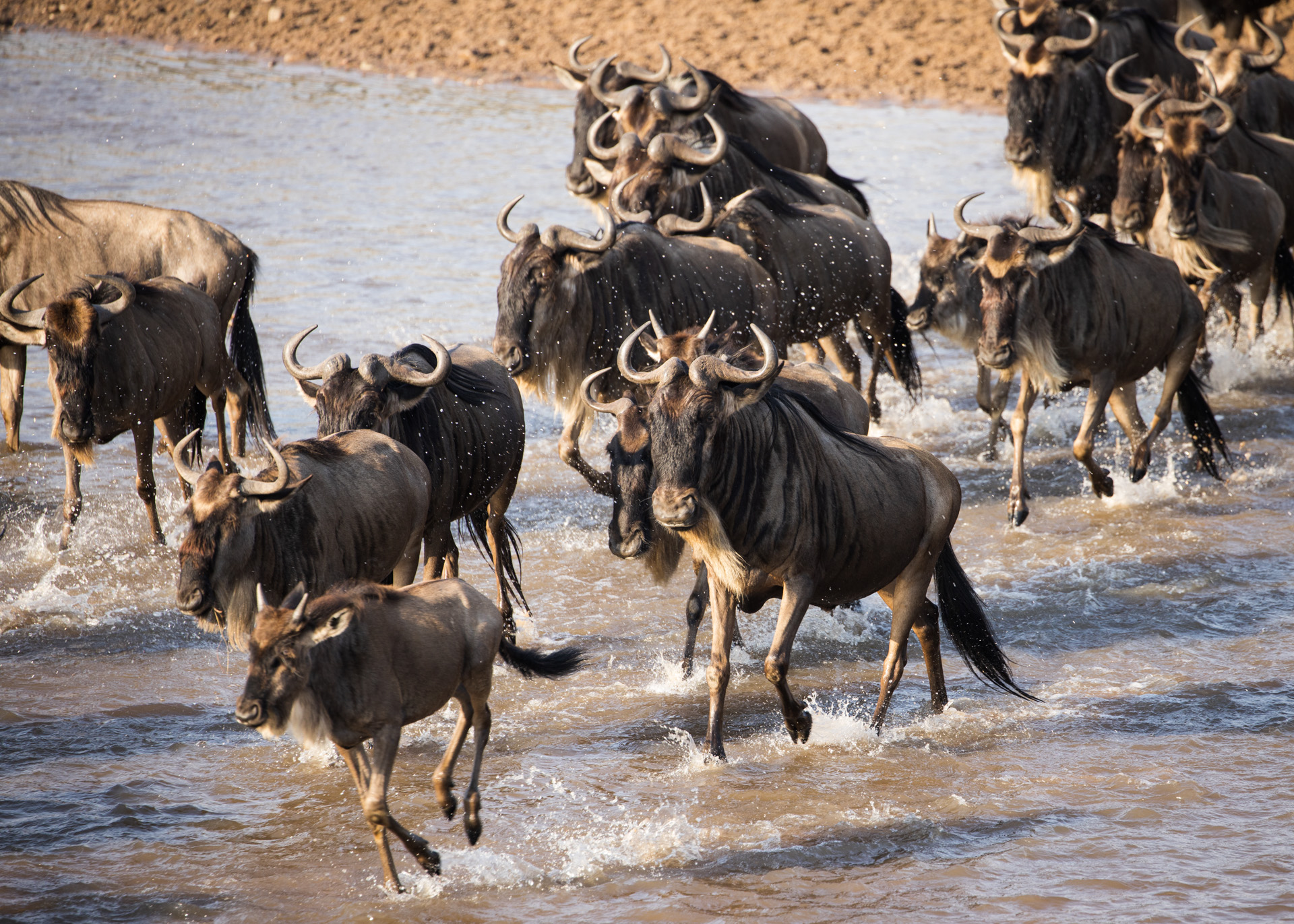
The Sand River crossings are far more relaxed than the notorious Mara River ones. At just half a foot in depth, the Sand River doesn’t house the dangers of crocodiles. This results in a completely different energy. [f 5.6, 1/400, ISO 320, -0.33]

The wildebeest will often take time to cross the river slowly and will even stop to drink in the process. [f 20.0, 1/30, ISO 100]

But as calm as it is, there is still a huge adrenalin rush as you see these animals running en-masse. [f 14.0, 1/40, ISO 100]
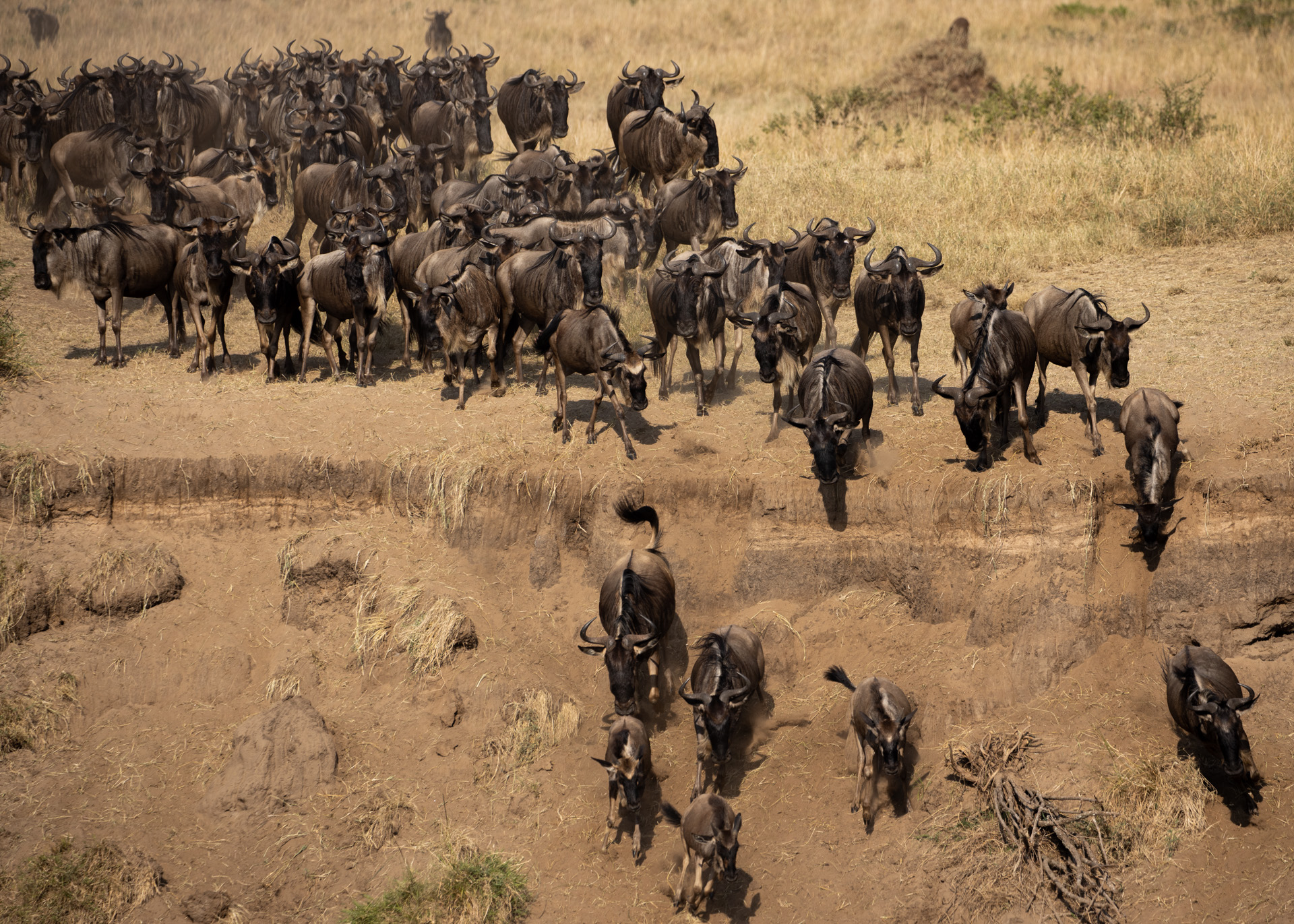
The sounds are what I think makes the migration so special. Hooves hitting dry ground and then crashing into the water. The combined grunts of hundreds of thousands of animals and the bleats of youngsters trying to find their mothers. It is visual and audible overload. [f 5.6, 1/640, ISO 100, -0.67]
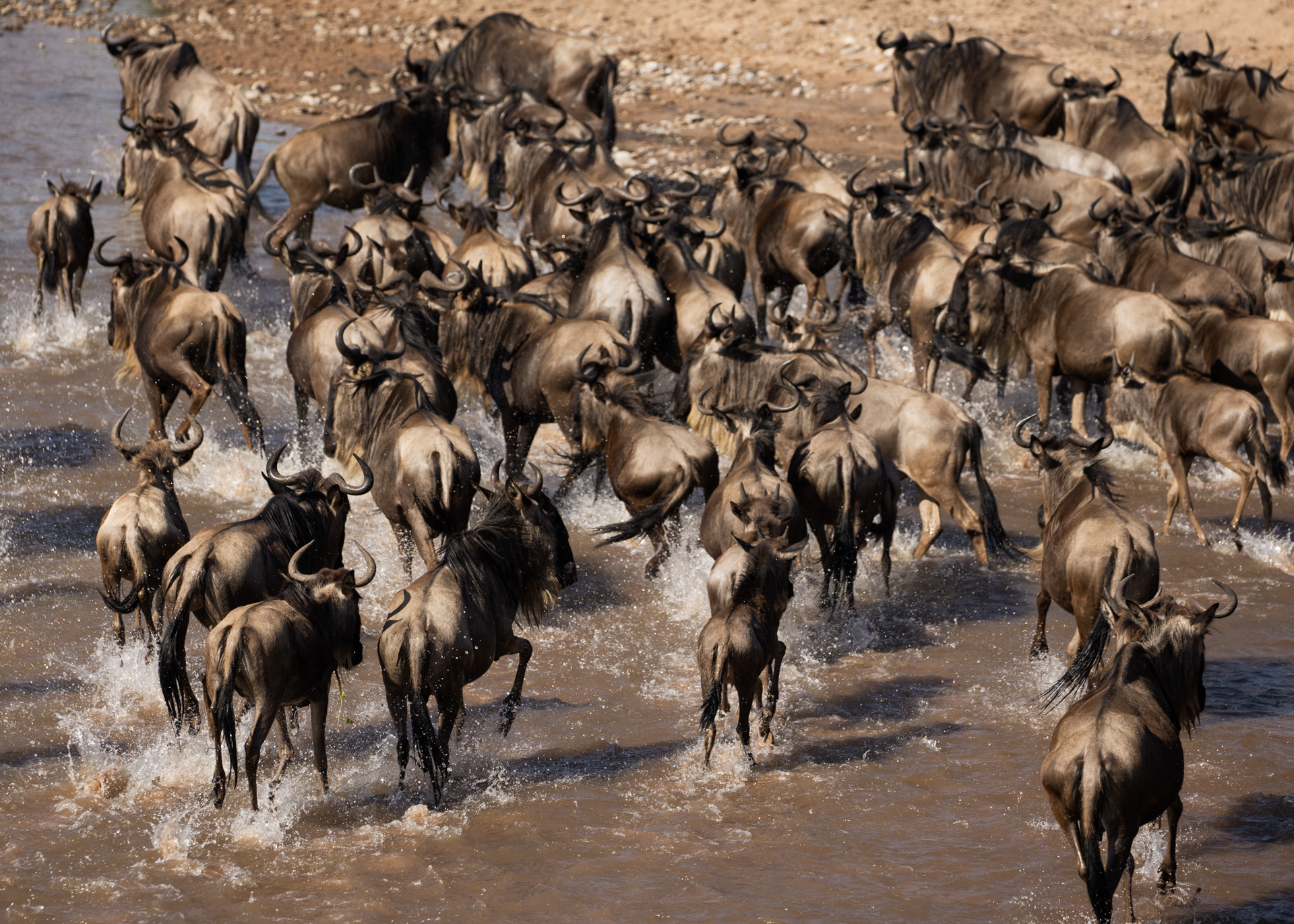
There is still confusion amongst the melee and even the slightest disturbance sends the herd running in all directions. You can be certain that over the next few months we will bring you the very best of the Great Migration. [f 4.0, 1/500, ISO 100, -0.33]
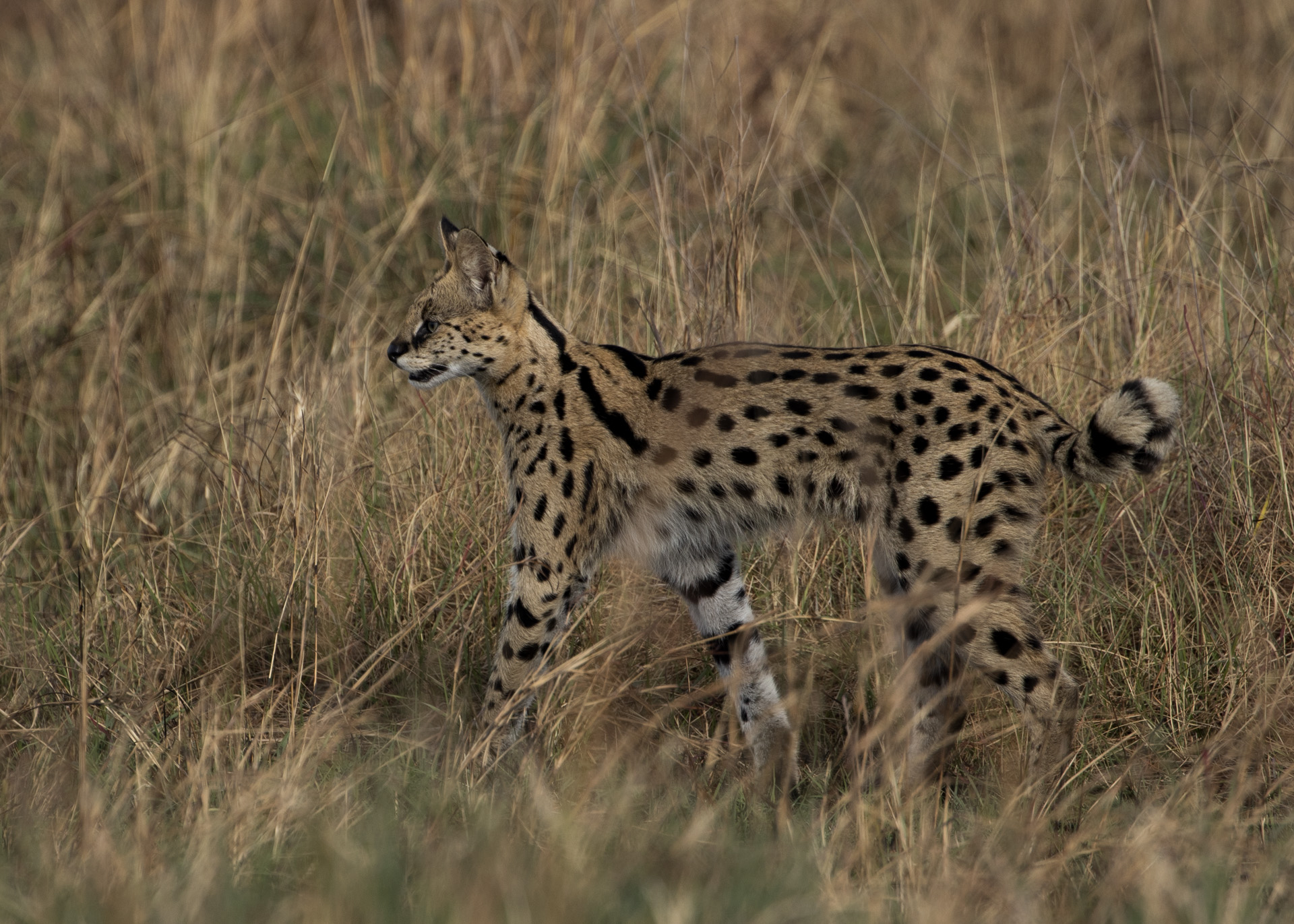
Of course, we will not forget to showcase the other gems of the Mara that tend to be overlooked during this time of wildebeest and zebra abundance. [f 5.6, 1/1000, ISO 160, -0.67]
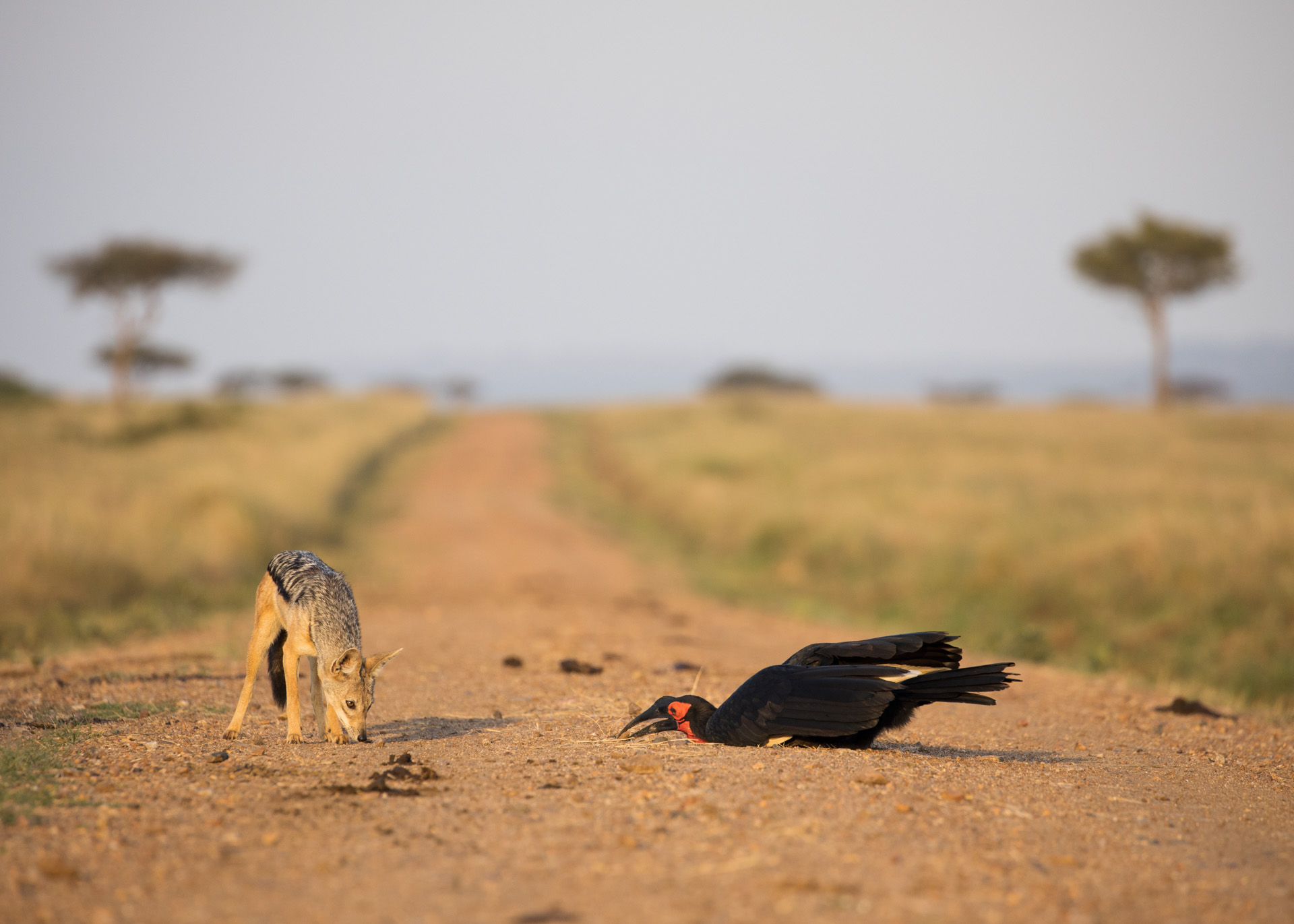
A rather unusual and comical set of events played out one morning. A small family of ground hornbills were squabbling over what looked like a seedpod. A pair of inquisitive jackals trotted down the road towards them and came closer to investigate. [f 5.6, 1/400, ISO 500]

This annoyed the ground hornbill, who in a quick flick of his wings, took flight. [f 5.6, 1/400, ISO 500]
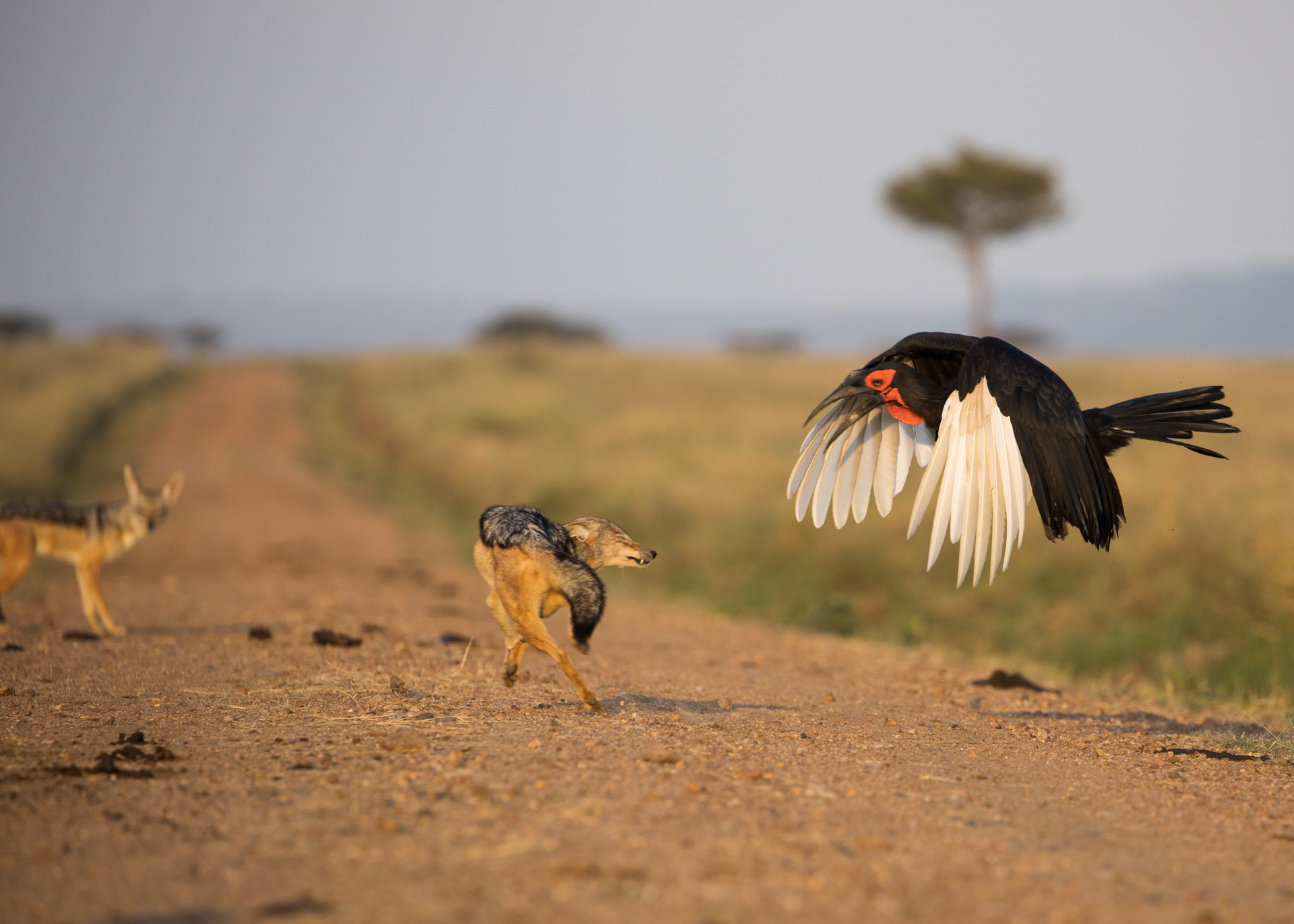
One jackal came within a few feet of one of the birds. [f 5.6, 1/400, ISO 500]
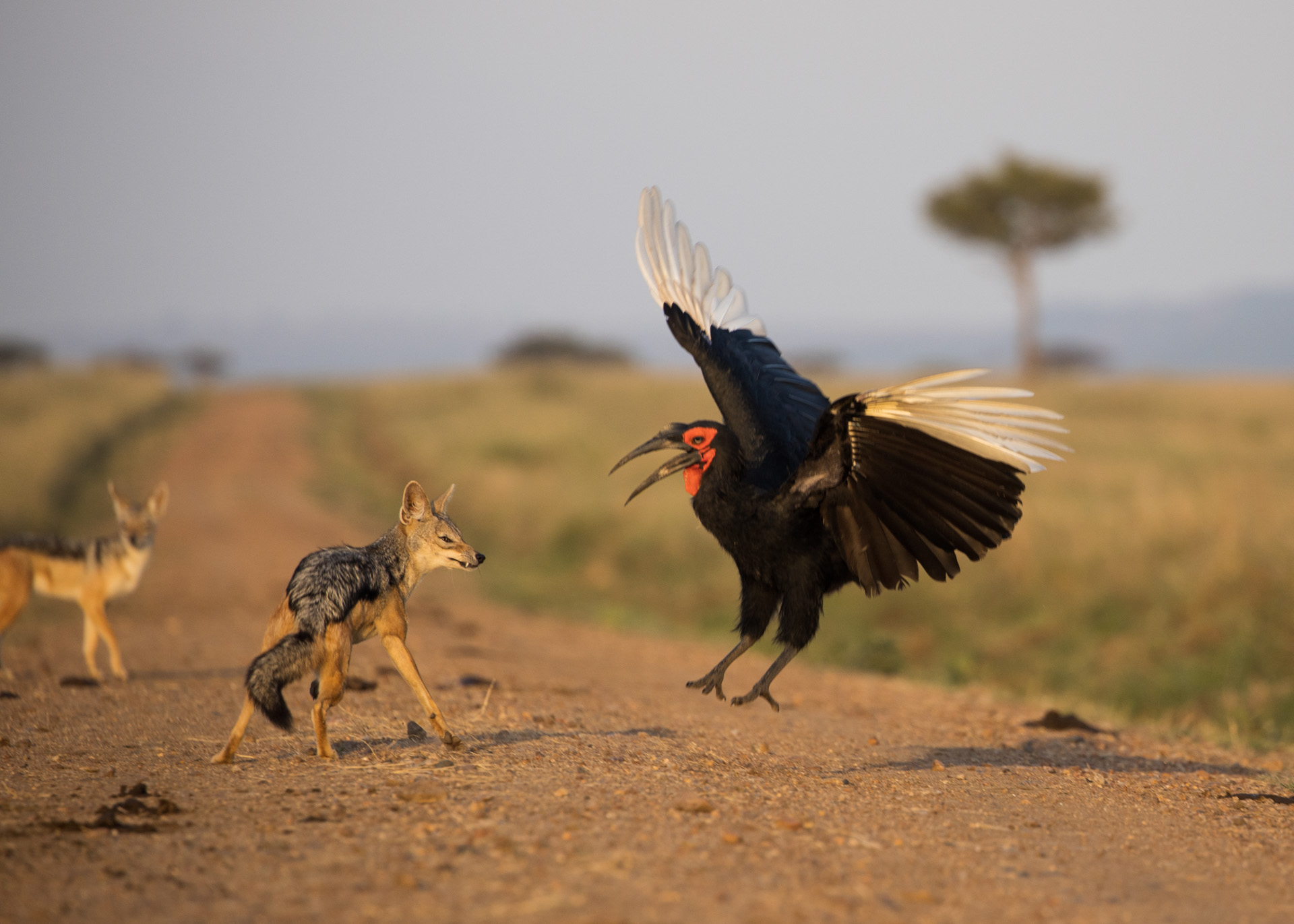
The hornbill chased the pair of jackals down the road. [f 5.6, 1/400, ISO 500]
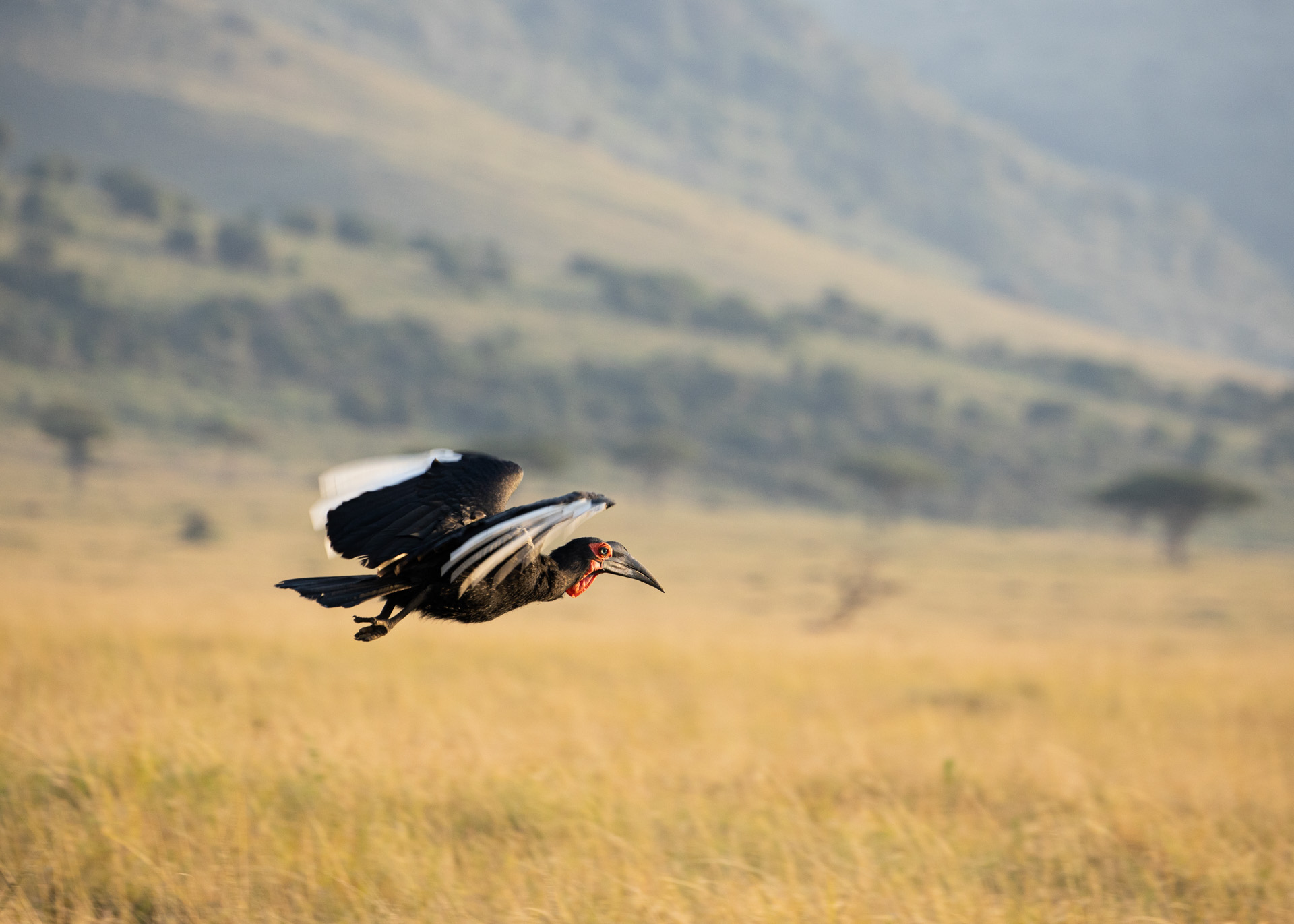
Before flying away, and leaving the seedpod behind. [f 5.6, 1/400, ISO 500]
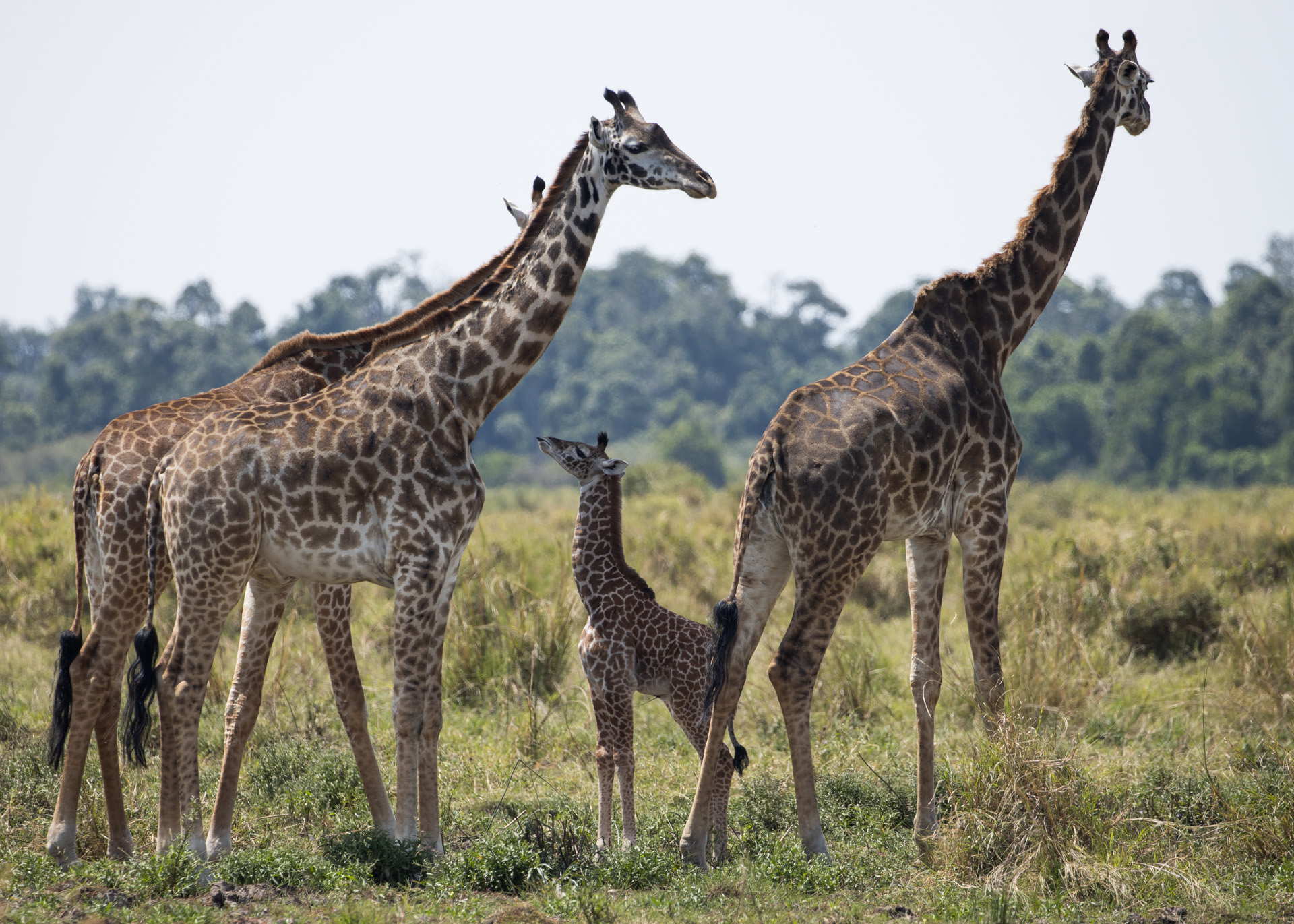
A relatively new-born giraffe spending some time with family and friends. [f 5.6, 1/400, ISO 800, -0.33]
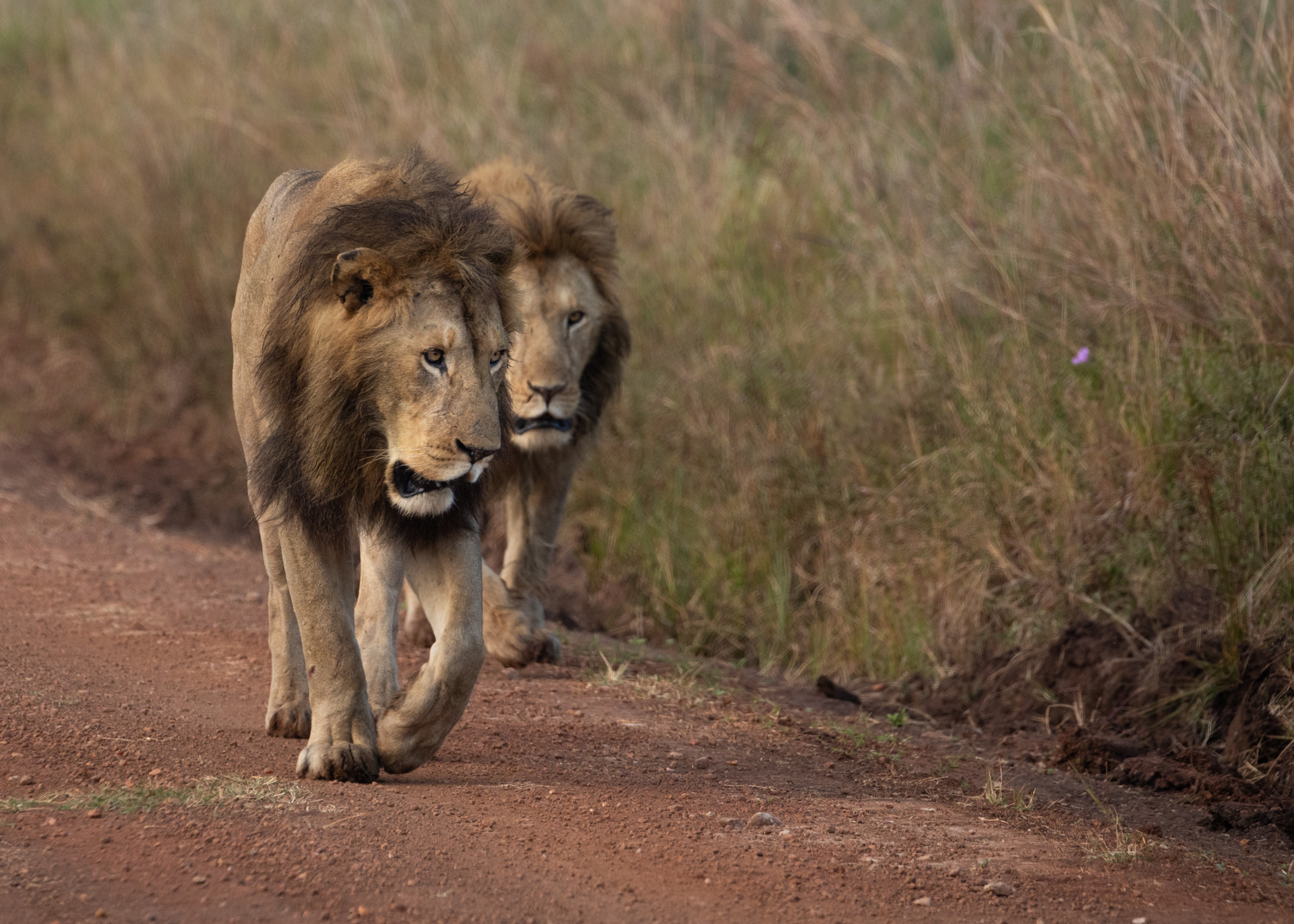
I couldn’t resist adding a quick lion update. The Bila Shaka Males killed a hippo on the greater reserve side of the Mara River – far east from where they have been spending the last few months. This left the two much smaller resident males, pictured here, running south – almost all the way to the southern Mara bridge. We wait to see if they will have the courage to return. [f 5.6, 1/320, ISO 100, -0.33]

The mornings are cool at the moment and it only really warms up around lunch-time. These hyraxes have taken to the formation of a ‘cuddle-puddle’ on the deck of North Camp. Using body heat to help get through the chilly morning hours. [f 7.1, 1/400, ISO 400, -0.33]
This Week A Year Ago
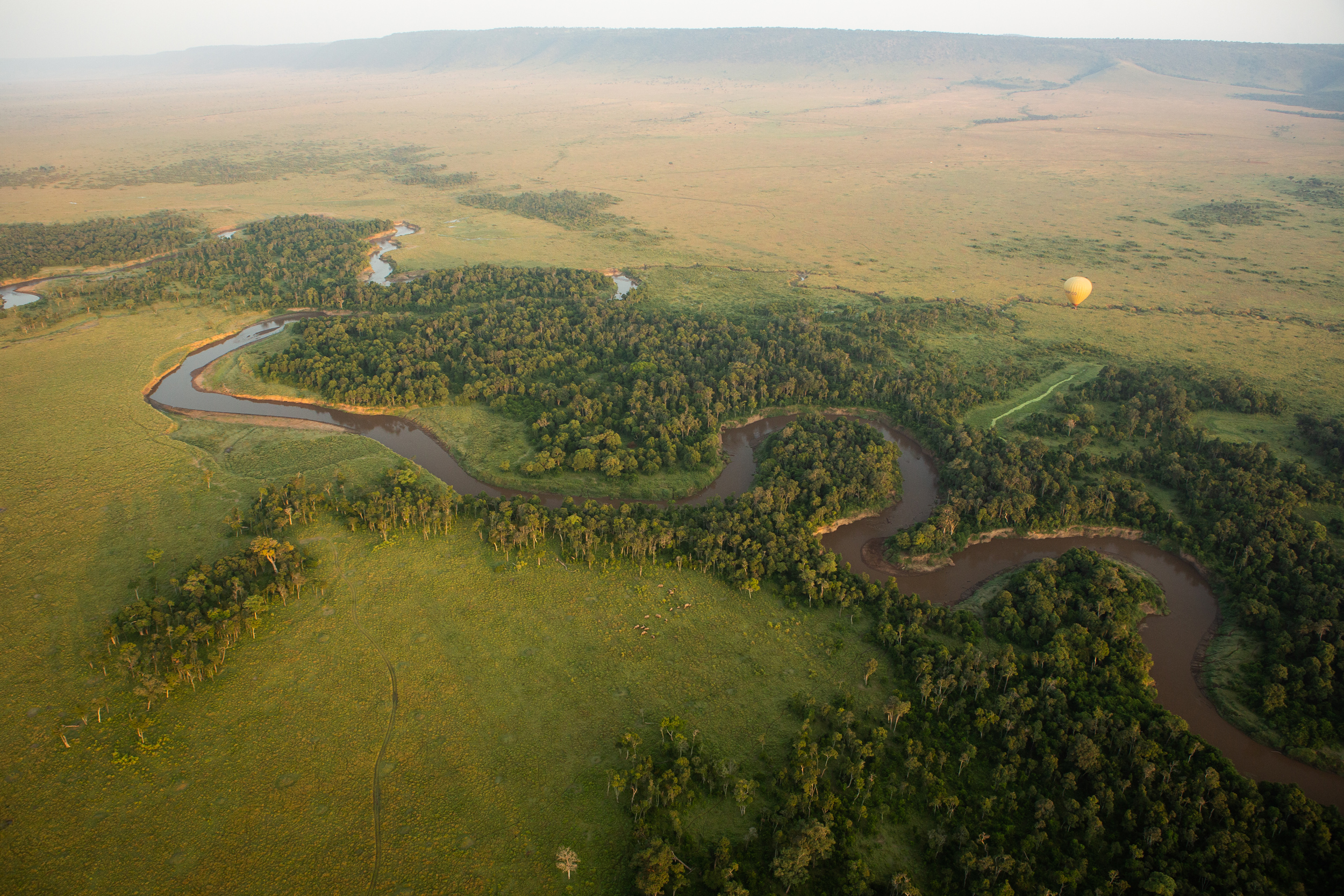
A year ago I drifted over the Mara River in a hot air balloon. Looking down on the landscape gives you the most incredible sense of scale and context. The silence, calm and serenity truly makes for a bucket list experience. [f 5.6, 1/125, ISO 800, +0.67]
TAGGED WITH: Migration, Photographic Safari, the great migration, Safari Photography, Angama Wildlife, Wildebeest Migration, Kenyan Migration



COMMENTS (1)
Judy Williams
July 25, 2020As always, I am in awe looking through your photos. You capture the essence of the Mara and have a gift for being able to take people on a virtual safari.
REPLY